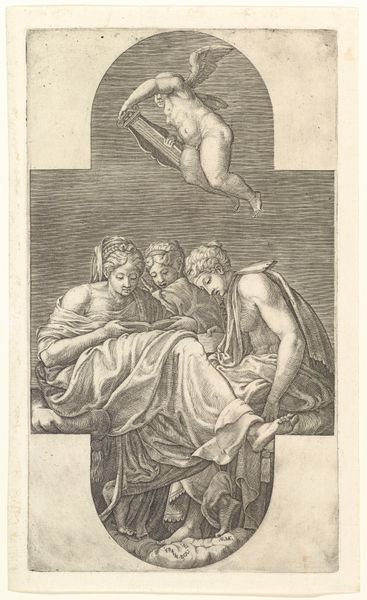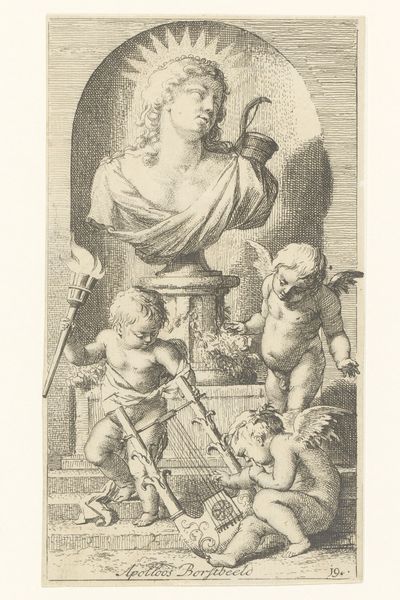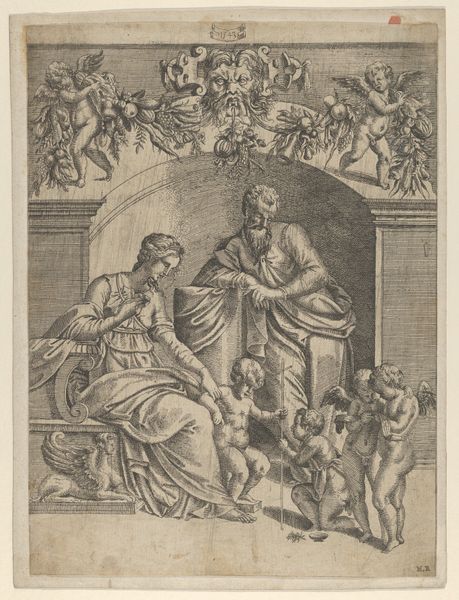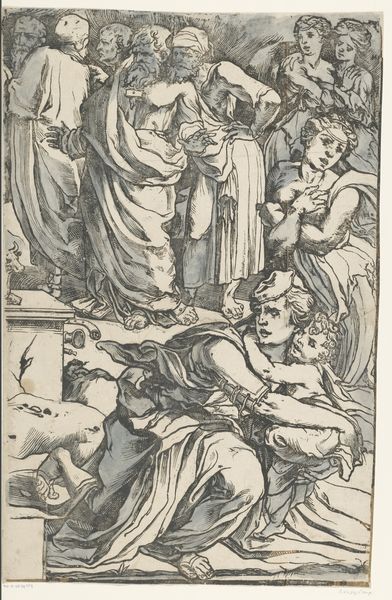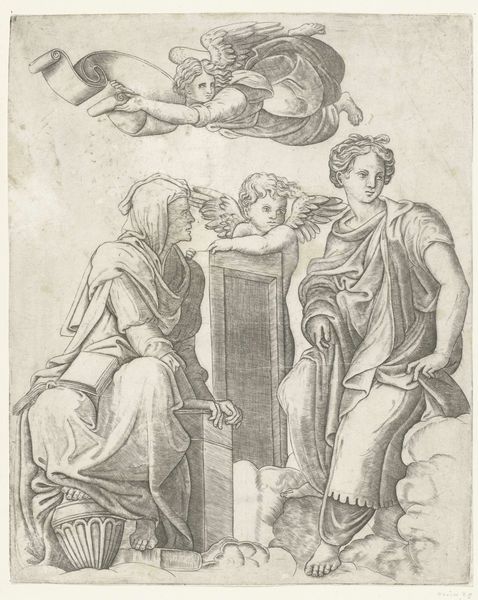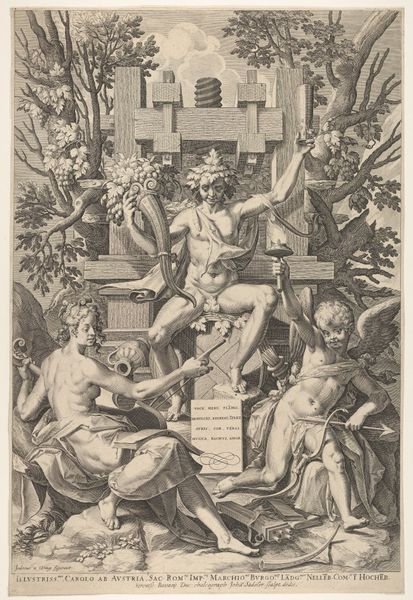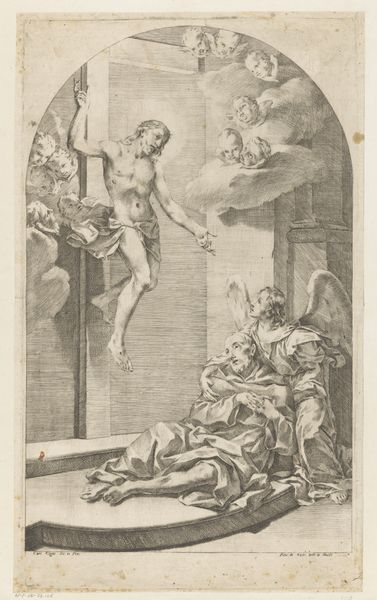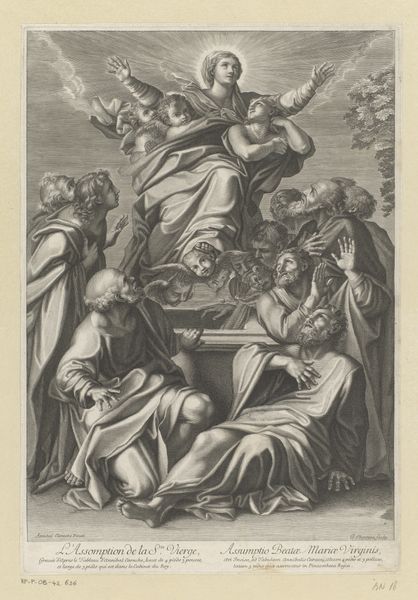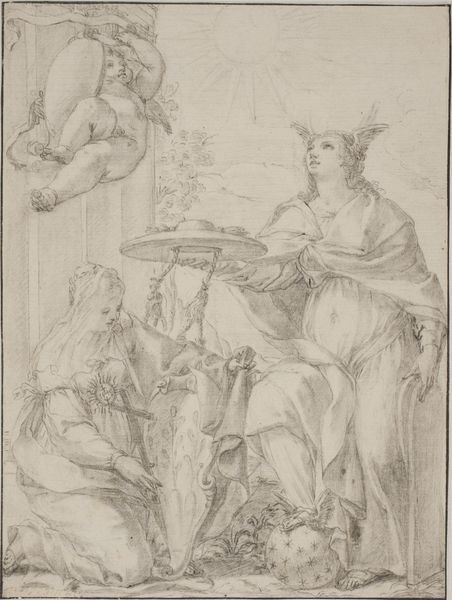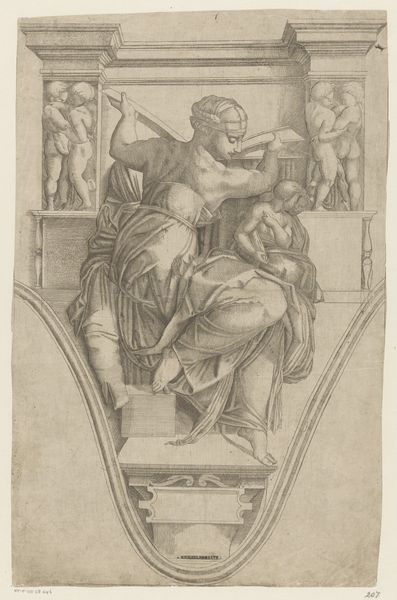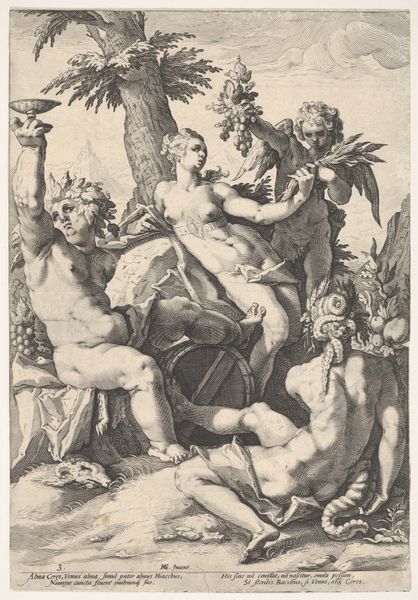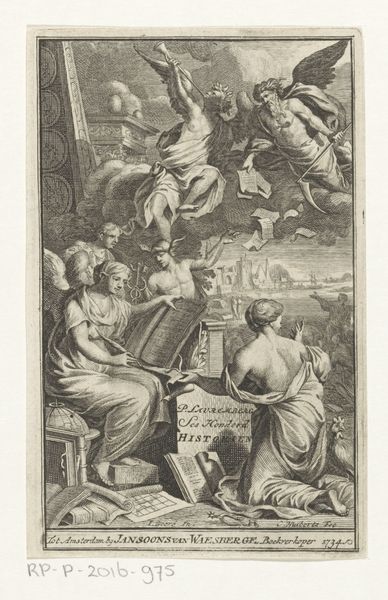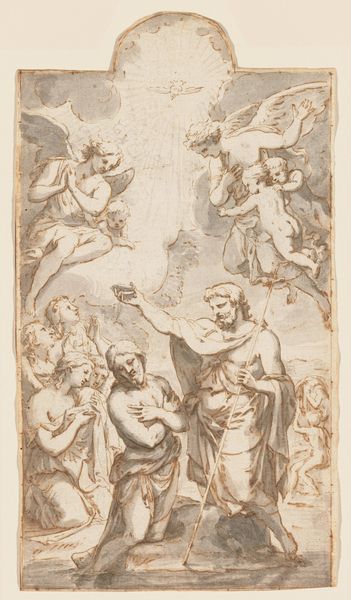
Three Muses and a Putto with Cymbals, a cruciform composition, from a series of eight compositions after Francesco Primaticcio's designs for the ceiling of the Gallery of Ulysses (destroyed 1738-39) at Fontainebleau 1560s
0:00
0:00
drawing, print, engraving
#
drawing
# print
#
mannerism
#
figuration
#
men
#
history-painting
#
musical-instrument
#
italian-renaissance
#
engraving
Dimensions: plate: 11 3/4 x 6 3/4 in. (29.8 x 17.2 cm) platemark sheet: 12 11/16 x 7 11/16 in. (32.2 x 19.5 cm)
Copyright: Public Domain
Editor: This engraving from the 1560s, "Three Muses and a Putto with Cymbals," is based on a design by Francesco Primaticcio and engraved by Giorgio Ghisi. I'm struck by how the rigid cross-shaped frame contains such fluid, fleshy forms. What catches your eye about this print? Curator: It's a fascinating intersection of artistic labour, isn't it? Ghisi is translating Primaticcio's vision into a repeatable, reproducible image. Consider the division of labor here – Primaticcio designs, Ghisi executes. The engraving medium itself allowed for wider dissemination and, therefore, consumption of these classical ideals, beyond the gilded walls of Fontainebleau. This expands the very *idea* of the original. Editor: So, it's less about individual artistic genius and more about the system of artistic production at the time? Curator: Precisely. Look at the deliberate tooling, the cross-hatching, the labour involved in replicating form and texture on the copper plate. Each line speaks to the market's desire for art, accessible not through commission but through purchase. Are we looking at "high art" or a sophisticated commodity, or perhaps both? Editor: That makes me think about the destruction of the Gallery of Ulysses; the print almost acts as a record of labor and a vehicle for consumption. It makes one ask, who exactly was the target audience? Curator: A keen question! A market steeped in Humanist ideals; the Italian Renaissance influencing courtly taste beyond the Alps. The print’s survival allows us to continue to discuss its role and materiality! Editor: I never thought about an artwork being a record of economic shifts. Thanks! Curator: Indeed, art isn’t solely about aesthetics, but speaks volumes about socio-economic networks as well!
Comments
No comments
Be the first to comment and join the conversation on the ultimate creative platform.
